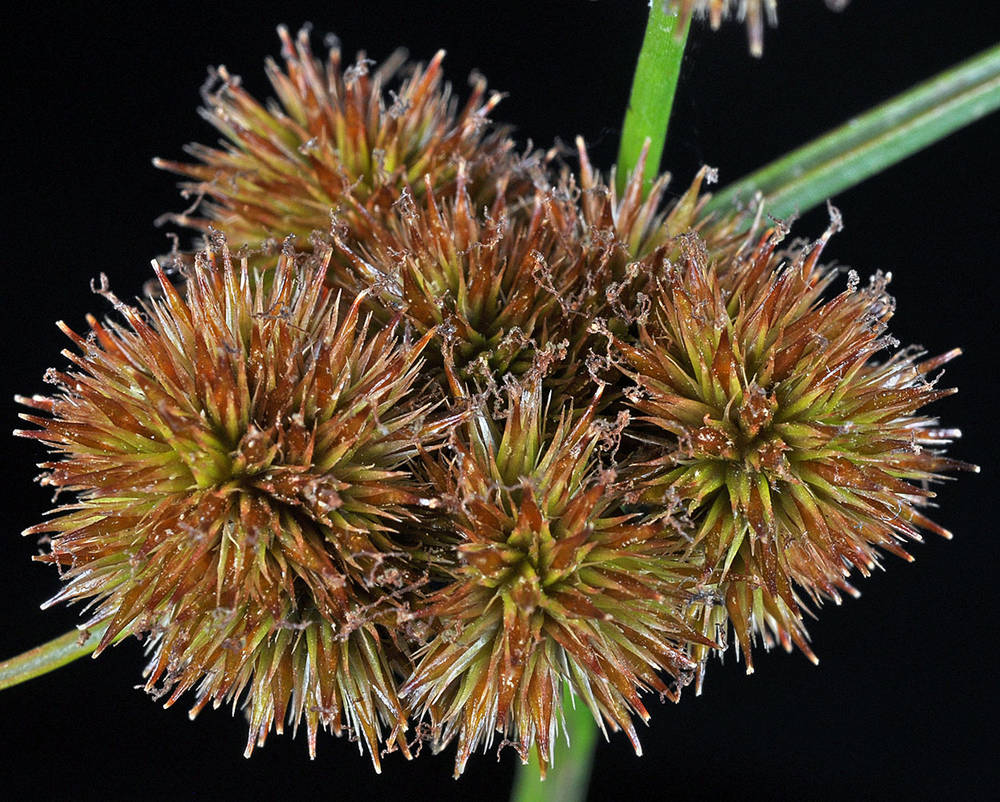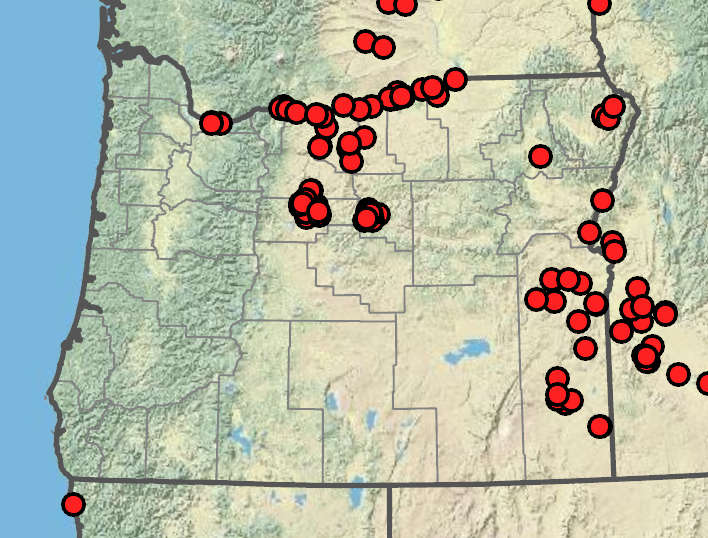Juncus torreyi
Torrey's rush
round; hollow, septate, often stiff and divaricate;
auricles 1–3.5 mm.
1–23 dense head-like clusters; clusters globose with 26–80 flowers.
tepals 6, brown; greenish or reddish;
tips acuminate;
stamens 6;
filaments 0.6–1.2 mm;
anthers 0.4– 0.8 mm;
styles 0.1–0.2 mm.
equaling or longer than the tepals, pale brown to dark brown, gradually tapered to acuminate tips, 1-chambered.
ellipsoid to ovoid, 0.4–0.5 × 0.2–0.3 mm, apiculate.
=40.
Juncus torreyi
Shores, swales, springs, ditches. 50–1300m. BW, Col, Lava, Owy. CA, NV, ID, WA; across the US and southern Canada, south to Mexico. Native.
This is primarily an eastern Oregon species, with large globose clusters, peculiar swollen rhizome nodes, and spreading stiff foliage.
Peter Zika
- Local floras:
BC,
CA,
OR,
WA
- Local Web sites:
CalFlora,
CalPhotos,
Flora NW,
PNW Herbaria
WildflowerSearch
iNaturalist (observations)
USDA Plants Database
- LBJ Wildflower Center
- SEINet
- Plants of the World Online
- Encyclopedia of Life
- Wikipedia
- Google Image Search

